
Sustainability Introduction
What is Sustainability?

The most common definition of “Sustainability” / “Sustainable Development” is development that meets the needs of the present without compromising the ability of future generations to meet their own needs.
– The United Nations World Commission on Environment and Development (The Brundtland Commission, 1987).
Sustainability is often represented by the symbol on the right. Each ring represents one of the three systems that support our civilization: the economy, the environment, and our society. Each of these rings overlaps, i.e. influences, or is affected by, the other two. For a community to be sustainable, each of these systems must be in balance with the others. An environmentally sustainable community is one that manages and stewards its natural resources and environmental assets so that its value is preserved, restored, and enhanced for present and future generations, and so that stewardship complements the community’s efforts to foster economic and social health.
Why is Sustainability Important?
The world’s natural resources support all life and are the basis of all production that supports our global and local economy. Global environmental trends indicate the degradation of air and land, water scarcity, deforestation, marine pollution and a decline in biodiversity. Continued consumption of natural resources are inherently unsustainable.
To change these complex and multifaceted trends requires a sustainable approach. Sustainability practices inherently explore solutions that resolve complex problems from a variety of angles. After all, it explores impacts that address people, planet and profit collectively.
New Jersey Takes Steps Towards a Sustainable Future
In New Jersey, environmental sustainable solutions are based around the following areas:
- Energy Conservation
- Water Conservation
- Waste Reduction, Reuse and Recycling
- Pollution Prevention
- Natural Resources Conservation and Management
Envisioning a Sustainable Future
Sustainability requires an ability to visualize and plan for a future where natural resources are available for future generations. It is not yet clear what our sustainable future will look like, but we can learn from the technological advances that have shaped today, and consider how current innovations may transform the future.
Planning for the Future by Learning from the Past
Since visualizing a few generations into the future is challenging, perhaps a look into our past will help. Much has changed over the past 100+ years. In part, this comes from what was started during the last wave of the Industrial Era. Below is a look at some of the inventions and milestones in the last century; it’s amazing to see how far we have come.
-
1901
President Theodore Roosevelt makes environmental conservation a domestic priority
-
1903
The Wright brothers invent the first gas motored and manned airplane
-
1913
Henry Ford installs the first moving assembly line for the mass production of the Model T Ford
-
1925
John Logie Baird displayed one of the first moving images on a TV screen
-
1931
Average annual CO2 levels at 308 ppm.
-
1936
The National Wildlife Federation is founded
-
1940
Almost half of American homes lacked the trifecta of hot/cold water, a tub or shower, and a flush toilet
-
1951
The Nature Conservancy is founded
-
1954
Invention of the first solar cell and operation of the first nuclear power plant
-
1960
Average annual CO2 levels reached at 316 ppm
-
1962
Rachel Carson’s book, Silent Spring, launches a new era of growth in environmental awareness and activism
-
1969
Astronauts walk on the Moon, and people perceive the Earth as a fragile whole
-
1970
Earth Day is celebrated for the first time by an estimated 20 million people across the United States
-
1975
Widespread use of the catalytic converter in cars begins to restrict air pollution
-
1977
Invention of the first mass-produced home computer, The Apple II
-
1983
The modern internet is created
-
1985
Antarctic Ozone hole is discovered by British and American scientists
-
1987
Sustainable Development is defined
-
1990
USDA develops national standards for organic products
-
1997
First mass produced hybrid is introduced – Toyota Prius
-
2002
Bangladesh is first country to ban plastic bags
-
2004
USEPA launches first national air quality forecasting capability
-
2008
NJ e-Waste Recycling Law passed.
-
2010
First 60W equivalent LED lamp is released
-
2016
Average annual CO2 levels reached record height of over 400 ppm
Today’s Technology Shaping our Future
Where will our vision for a sustainable New Jersey take us in 2123 or longer to 2223? Where will the inventions of today take us in the future? Here are a few examples of inventions listed in Time Magazine’s list of the Best Inventions of the Year since 2018. These inventions are putting sustainability into action, and shaping possible visions of tomorrow.
2022
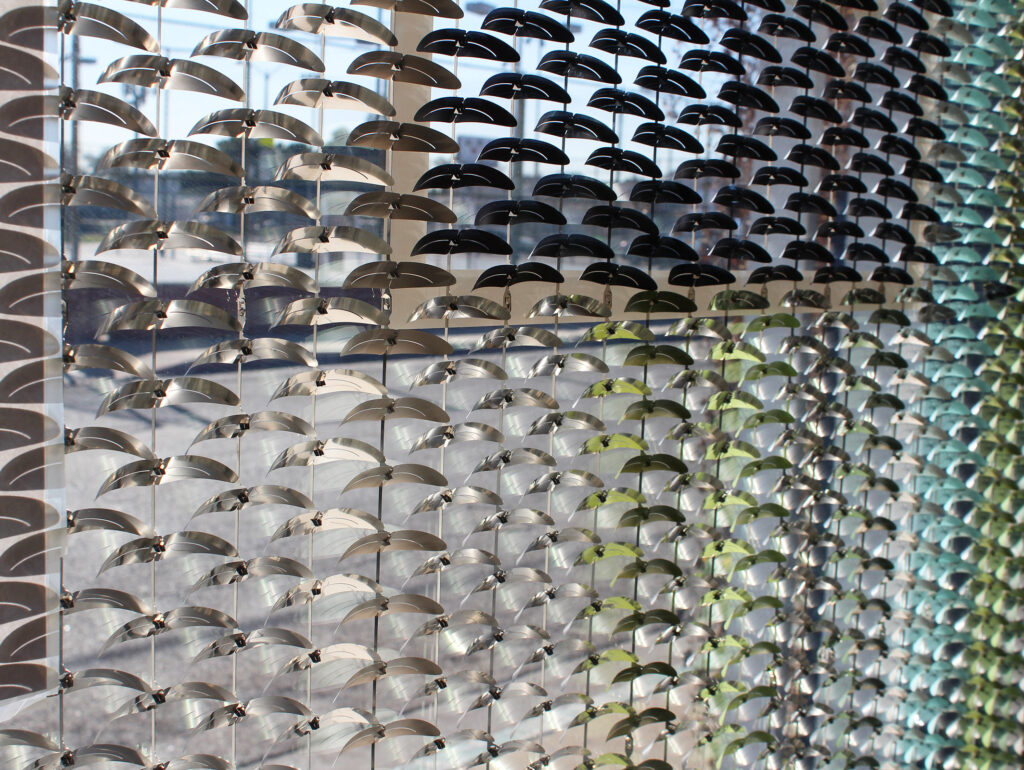
An Electricity-Free Smart Window – TBM Designs InVert Self-Shading Windows
Nearly 30% of global energy-related carbon emissions stem from heating, cooling, and powering buildings. TBM Designs created InVert self-shading windows to reduce solar heat gain and associated energy consumption. Each window features a cavity of insulated glass containing small pieces of thermo-bimetal—a lamination of two metals, one of which expands in heat. The effect is spectacular: When the sun heats up an InVert window, the petal-shaped pieces inside it automatically flip to block light while remaining transparent, cutting cooling needs by up to 25%. Unlike other “smart” windows, InVert—which became commercially available this year—doesn’t use any energy, says TBM Designs co-founder and CEO Karen Sabath. – Matt Alderton
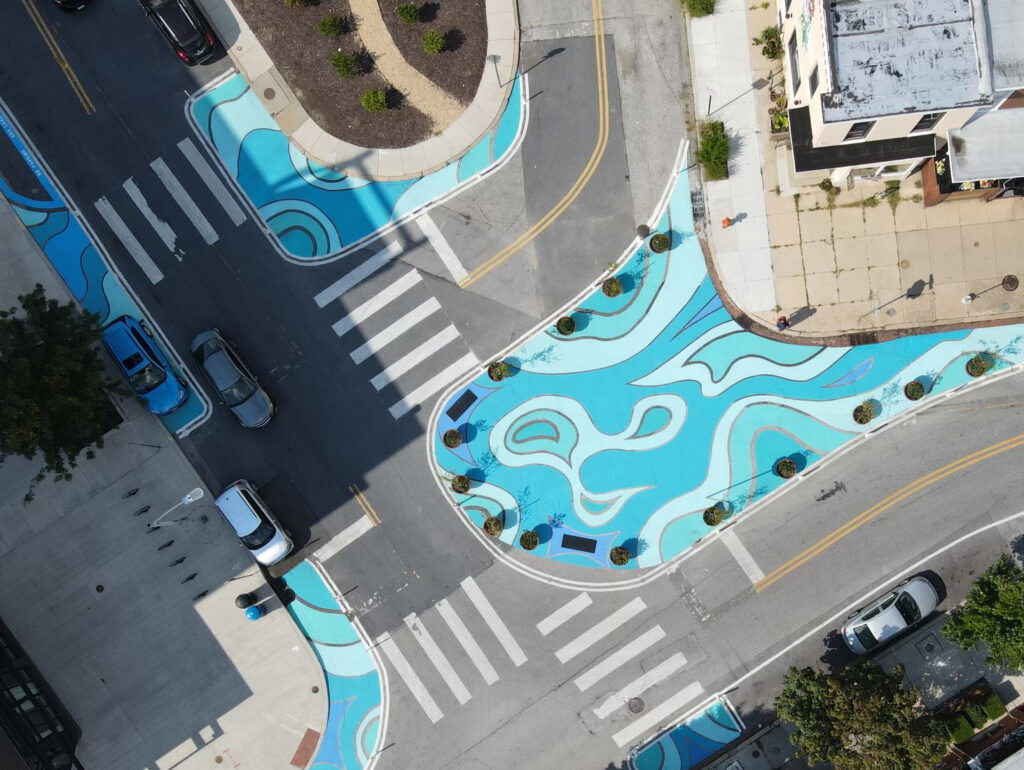
Cooling Urban Heat Islands – GAF StreetBond Reflective Pavement Coating
In Pacoima, one of the hottest neighborhoods in Los Angeles, there are 10 square blocks where the pavement reflects sunlight instead of absorbing it. That asphalt—on streets, playgrounds, basketball courts, and parking lots—is covered with StreetBond. It’s part of a new urban heat island mitigation research project involving community groups and GAF, the roofing company that makes StreetBond. The water-based acrylic coating for asphalt contains a unique solar reflective additive that keeps pavement covered with the substance about 10 to 12 degrees cooler than uncoated surfaces, says Eliot Wall, StreetBond’s director of innovation. The nontoxic coating comes in 59 colors, extends the life of asphalt, and can be recycled. By the end of 2022, about 20 million square feet of pavement in the U.S. will be coated with solar reflective StreetBond. – Jillian Mock; Photo by Graham Coreil-Allen
2021
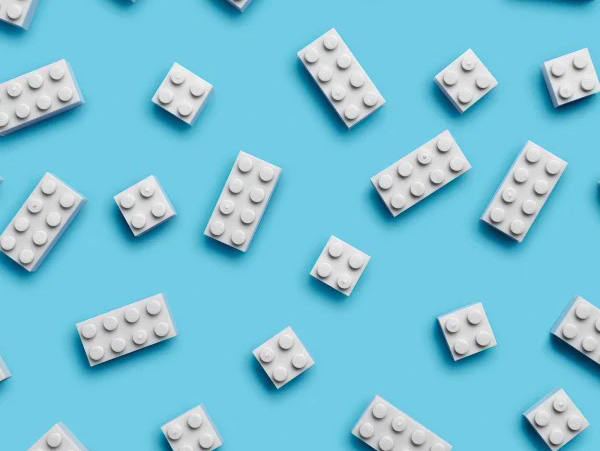
From Bottles to Bricks – LEGO recycled brick
About half of the world’s PET plastic—which is used to make plastic water bottles and containers—winds up in landfills. Someday soon, a good amount could end up in LEGO sets instead. The LEGO Group, which has vowed to make all LEGO bricks from sustainable sources by 2030, spent the past three years testing 250 variations of recycled PET materials and in June finally unveiled its prototype for a recycled PET brick that is nearly identical to the usual brick. That milestone achieved, the Danish toy giant hopes to integrate the recycled blocks into LEGO sets in the next 18 to 24 months. The impact could be considerable: the company uses some 100,000 metric tons of plastic resin in its products each year.
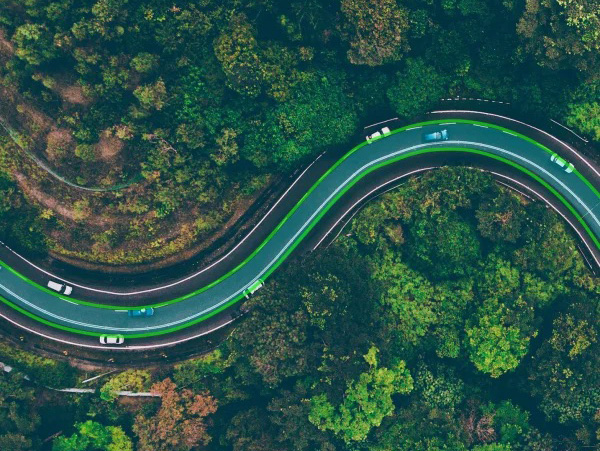
Wireless In-Road Charging – ElectReon
What if electric vehicles (EVs) could be charged by the very streets upon which they drive? That’s the idea behind ElectReon, an Israeli firm developing an in-road inductive charging system that powers EVs via electrical fields generated by coils under the asphalt, similar to how a wireless charger juices your phone. In part, the company’s goal is to allow EVs to carry smaller batteries—or, perhaps, none at all—thereby making them lighter and more efficient, as well as reducing the environmental costs of battery production. “Everyone is trying to improve the battery; we started to think about removing the problem,” says co-founder and CEO Oren Ezer. The company is conducting tests in Germany, Italy and Sweden, and in October inked a $9.4 million deal to charge electric buses in Tel Aviv.
2020
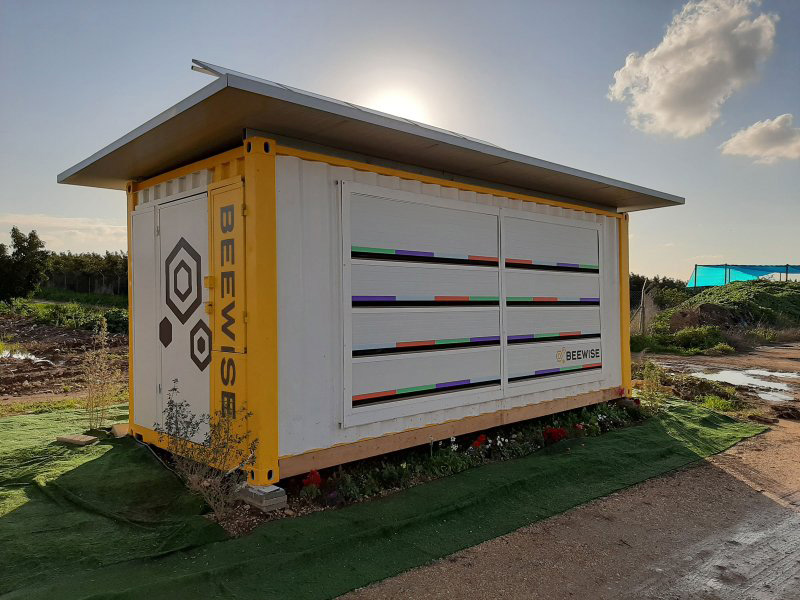
Beewise Beehome
An astonishing 40% of bees die every year as a result of disease, pesticides and climate change—in part because busy commercial beekeepers miss warning signs. That’s where Beewise, an artificial-intelligence-powered hive, comes in. Using precision robotics, computer vision and AI, a Beehome—which costs $15 a month and might host 2 million bees—monitors the insects 24/7. When a hive is exposed to, say, parasites or experiences irregular temperatures, its internal systems respond immediately by applying pesticides, for example. Use of the smart technology can double pollination capacity and honey production, while decreasing colonies’ mortality rate. “Not only do bees not die,” says Saar Safra, Beewise’s CEO. “They thrive.”

Fairphone 3+ Sustainable Smartphone
Some 50 million tons of electronic waste is created each year, much of it composed of elements that were unethically sourced in the first place. (One example: gold, found in circuit boards, is often mined under dangerous conditions.) In contrast, Dutch company Fairphone makes phones using minerals from conflict-free zones, sourced via more responsible supply chains. The phones are also built to stay out of landfills as long as possible. Made of 40% recycled plastic, the new Fairphone 3+ (€469, or roughly $554) has replaceable parts and an expected life span of five years. Its repair-friendly design lets you swap your battery or screen, or even upgrade your camera’s quality with just a screwdriver, encouraging users to hang on to their devices longer.
2019
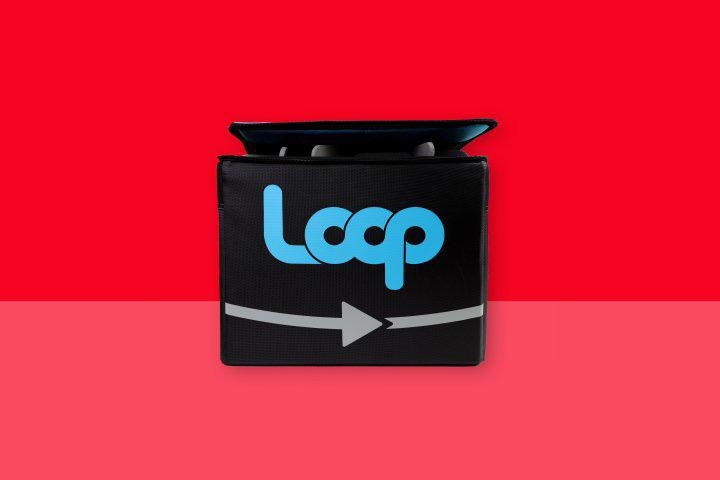
TerraCycle Loop
Loop wants to help make major brands more sustainable. Launched in May by recycling company TerraCycle, the service sells brand-name products—including Clorox wipes, Häagen-Dazs ice cream and Febreze air freshener—in durable, reusable packaging. Products range from $4 to about $60 and require refundable deposits for the containers. When they’re finished with the product, customers return the packaging to Loop, where it’s cleaned and refilled, and the cycle begins again. More than 80,000 people in the U.S. and France have signed up, with expansion to more countries planned soon.
Draper/Sprout Microplastics-Sensing Autonomous Underwater Vehicle
Take a sample from almost any major body of water, and you’re likely to find microplastics, or bits of plastic pollution less than 5 mm long. Many experts agree that microplastics are a cause for concern, as they may harm marine life or taint our fish and water supplies. But little is known about them beyond their prevalence—in an August report, the World Health Organization said getting more microplastics data is an “urgent concern.” That’s where the Microplastics-Sensing Autonomous Underwater Vehicle comes in. Designed jointly by Draper and Sprout working alongside the Environmental Protection Agency, the raylike drone is meant to swim around a body of water, collecting and analyzing samples for their microplastics content. Draper project lead Lou Kratchman says that data can be a jumping-off point for more advanced microplastics research. “We need something that’s comparable to the world Air Quality Index,” he says. “Kind of a global weather map that, in real time, we can look and see how the microplastics situation is changing.” While the drone is still a concept, a simpler prototype is already being successfully used in Hawaii.
2018

Second-Generation Zipline Lifesaving Delivery Drones
In 2016, Zipline made history by launching the first commercial drone delivery service in the East African nation of Rwanda, expediting the delivery of blood and vital medical supplies to some of the world’s most remote communities. This year, the California-based startup unveiled a new iteration of its fixed-wing craft that can carry up to 3.85 lb. at 80 m.p.h. for up to 100 miles per round-trip, making it the fastest—and most efficient—commercial delivery drone in the world. Zipline also streamlined its launch and recovery process, enabling the second-generation Zips to make 500 deliveries per day from their launching center, up from 50. And while Zipline will continue to serve rural communities in Africa, which now have even quicker, easier access to lifesaving supplies, the startup has other ambitions as well. Zipline recently started testing emergency medical-supply delivery in the U.S. and will start regular service in North Carolina early next year.
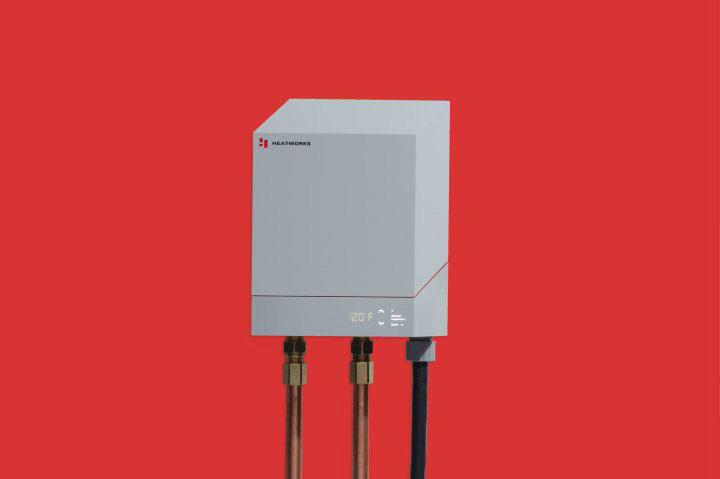
MODEL 3 Smart Water Heater
Most water heaters consume massive amounts of power, ratcheting up families’ energy bills in the process. The designers at Heatworks are looking to fix that with the MODEL 3 Smart Water Heater. Unlike other heaters, which heat water in a tank using metal components, the MODEL 3 sends electrical current through the water, heating it up quickly and only when residents actually need it. Using a companion app, owners can also track their water usage, set a maximum temperature and even limit shower times, further helping to curtail costs. At $799, the MODEL 3 is more expensive than many other water heaters, but the energy savings may well add up fast: Heatworks estimates that the device will save the average family of four $240 a year.
A glimpse of where New Jersey was in the early 20th century?
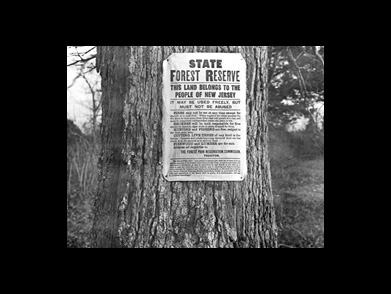
NJ Forest Park Reserve Sign, Bass River State Forest, 1907
“We are just beginning to realize the importance of our forests and the necessity for their preservation. They not only furnish timber and provide an important industry, but they beautify the country, temper the climate, hold the rainfall, fertilize the soil, furnish game preserves and conserve our water supply, an indispensable feature of our rapidly growing and congested civilization.” – Governor Edward C. Stokes, Inaugural Address, January 17, 1905
During the 19th century the forests in New Jersey were cut down for farming and lumber. Stokes State Forest was created in 1907 to counter this trend. Governor Edward Stokes donated 500 acres (2.0 km2) of land in the Kittatinny Mountains, and the State of New Jersey purchased 5,432 acres (21.98 km2) to create Stokes State Forest. Through the years, additional purchases increased that forest to over 16,000 acres (65 km2). Formal trails were created in the 1930s by the Civilian Conservation Corps, and white pine trees were planted. Learn more about NJ’s Open Space.
“The future depends on what we do in the present.” – Mahatma Gandhi
 OFFICIAL SITE OF THE STATE OF NEW JERSEY
OFFICIAL SITE OF THE STATE OF NEW JERSEY